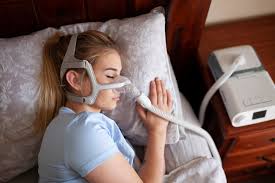
For many people with sleep apnea, CPAP Machines is nothing short of transformative. A steady flow of air through the night keeps the airway open, sleep deepens, energy returns, and the risk of serious health complications plummets. Sounds like a miracle, right? But here’s the twist: along with its undeniable benefits, CPAP Machines sometimes carries an unspoken price—unexpected skin and hair problems that can leave users frustrated, uncomfortable, and searching for solutions.
Why CPAP Therapy Can Irritate the Skin
Think about it. A CPAP mask needs to fit snugly, pressing against your skin for hours at a time. That pressure and friction, combined with the constant airflow, can lead to irritation. Redness, dry patches, even tender spots that feel sore in the morning are common complaints.
For those with acne-prone or oily skin, the situation can get worse. The mask traps sweat and oil against the face, creating the perfect breeding ground for breakouts. Some people even develop allergic reactions to the silicone, rubber, or fabric used in the mask or headgear. Layer on the drying effect of CPAP air, and suddenly the very therapy designed to improve your life is messing with your complexion.
The Overlooked Impact on Hair
Skin irritation is one battle—but what about your hair? CPAP masks come with headgear straps designed to keep everything in place while you sleep. Unfortunately, those straps can pull, tug, and press against the same spots on your scalp night after night. Over time, this pressure can lead to flattened hair, thinning patches, or breakage.
Men with facial hair face another challenge. Beards and mustaches interfere with the mask seal, often causing leaks. The natural reaction? Tighten the straps. But overtightening only worsens the problem, increasing both skin irritation and hair damage. It’s a frustrating cycle many users never anticipate when starting CPAP therapy.
What You Can Do About It
Here’s the good news: most of these problems aren’t permanent. With a few adjustments, you can protect your skin and hair without sacrificing the effectiveness of your treatment
Pick the right mask: Nasal pillow masks reduce facial contact, which means fewer chances for redness or sores.
Use mask liners or pads: A soft fabric layer between your skin and the mask absorbs sweat and prevents rubbing.
Loosen up the straps: Straps should hold the mask in place—not dig into your skin. In fact, overtightening often makes leaks worse.
Clean consistently: Dirt, oil, and bacteria collect fast. Daily cleaning keeps your gear fresh and lowers the risk of breakouts.
Protect your hair: Strap covers, silk head wraps, or simply adjusting strap positions can prevent repeated stress on the same area of the scalp.
When It’s Time to Seek Help
If your skin continues to flare up despite these changes, or if your hair damage feels extreme, it may be time to talk with a professional. A dermatologist can recommend creams or treatments for irritation, while a sleep specialist can guide you toward alternative masks or setups better suited to your needs. Remember: CPAP therapy should be a solution, not a new source of problems.
Final Thoughts
There’s no question that CPAP machines are the gold standard for sleep apnea treatment. They protect your heart, your brain, and your energy. But skin irritation, hair thinning, and strap-related issues are real side effects many users never see coming. By learning how to prevent and manage them, you can protect your skin and hair while still enjoying the life-changing benefits of restful sleep.
